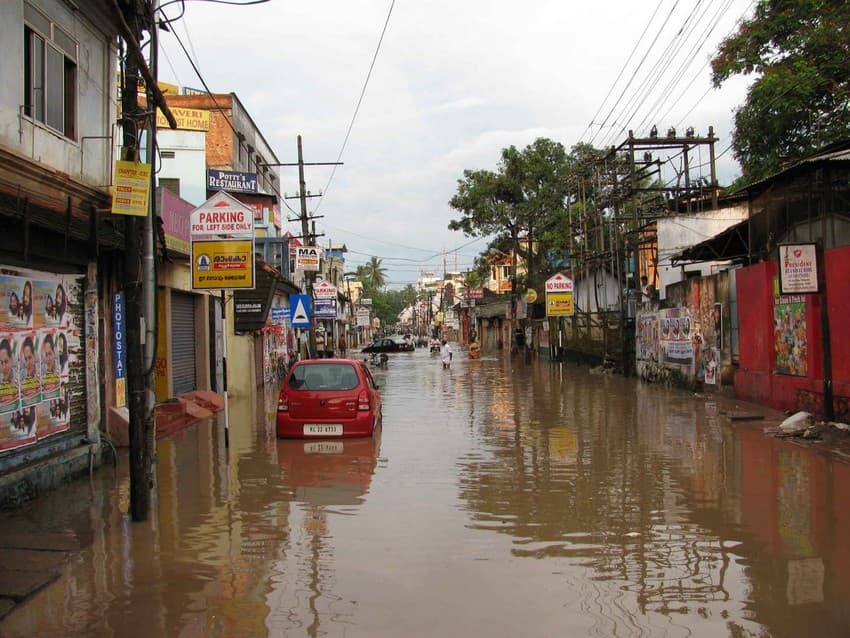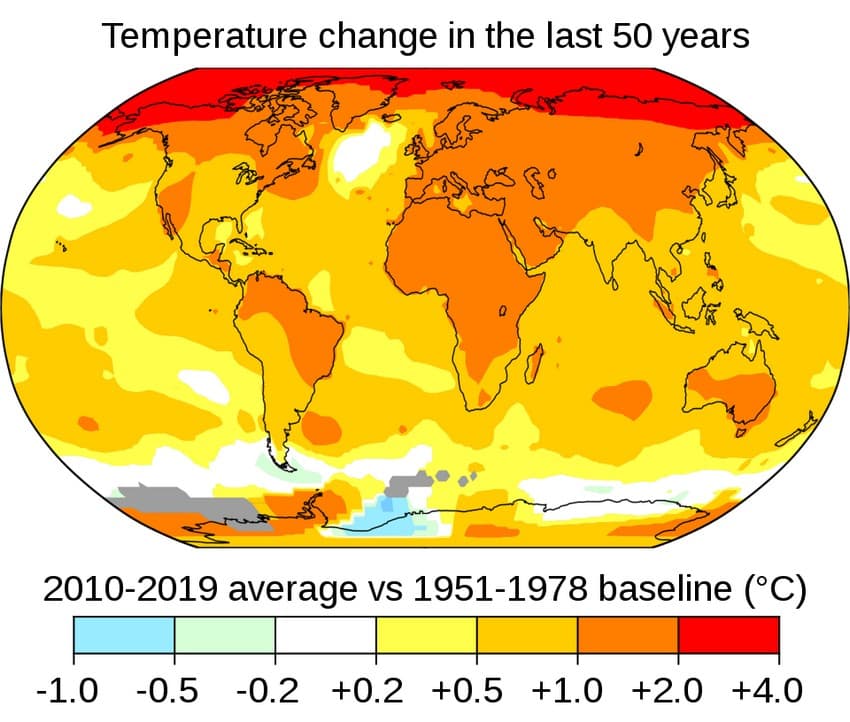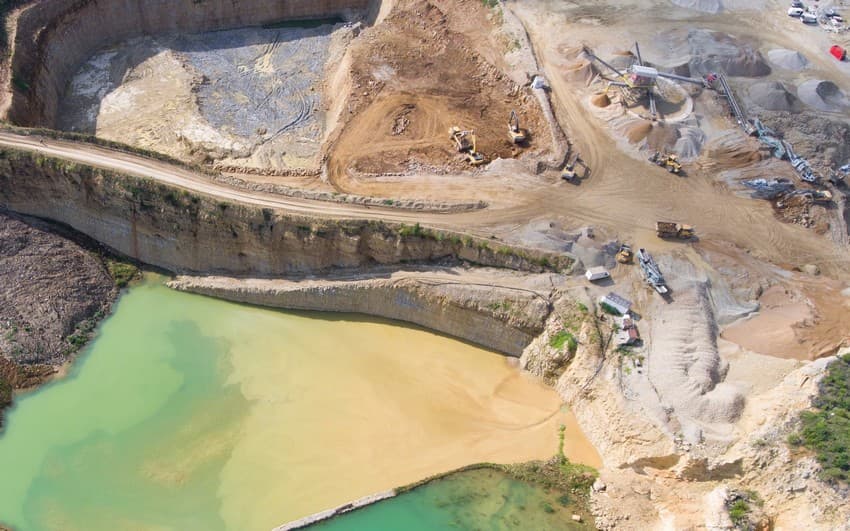Over the past few months, I have been consistently coming across rather disturbing news from all over the world, the headlines for which when read together could pass off for a ‘fictional’ doomsday film plot. But, this is real life.
Below are some of those many unnerving headlines –
‘Water Wars: How conflicts over resources are set to rise amid climate change’
‘A third of my country was just underwater. The world must act on climate – Sheikh Hasina’
‘68% Average Decline in [Wildlife] Species Population Sizes Since 1970’
‘ “Climate change and debt are sinking us”: Small island nations cry for help’
‘Amazon tragedy repeats itself as Brazil rainforest goes up in smoke’
‘California fire threatens over 1000 homes as blazes burn across US west’

Extreme weather events like flooding have become more severe and frequent in several parts of the world including India. Photo credit: India Water Portal/Public Domain
Amidst these debilitating news, the news of a study by the University of Washington’s Institute for Health Metrics and Evaluation had been doing the rounds. This study shows a stark drop in women’s fertility rate, globally, to 2.4 in 2017 as compared to 4.7 in 1950. Fertility rate is the average number of children a woman bears in her lifetime. This has led to forecasts of global human population crash by 2100, with several countries like Japan, Italy, Spain, Portugal among others already showing signs of population decline. By 2100, about 183 out of 195 countries, as per the study’s projections, will see their fertility rates dropping below the population replacement level. Concerns regarding eventual unprecedented negative impacts of declining populations on societal functioning, economy, and pressure on healthcare due to inverted age structure (populations of old people overtaking the young) were expressed.
While these are genuine concerns, the truth of the matter is, this scenario will most probably reflect 80-100 years from now. In the meantime, the global population is set to peak to 9.7 billion by 2064, after which, as per the researchers of the study, the human population will begin descending to the point that by 2100, the population will have plummeted to 8.8 billion (the UN’s projections, on the other hand, estimate the population exceeding 11 billion by the end of the century!). Either way, there will be more people on the planet than there are now. Today, 7.8 billion (at the time of writing this) of us are proving to be far too many. Increasing urbanisation and unsustainable consumption patterns are exerting deathly pressure on the planet’s limited resources and space, and our carbon footprint is only getting bigger. The growing population is undeniably exacerbating this pressure. Human activities are continuing to churn out more and more greenhouse gas emissions, worsening the problem of global warming with each passing day.
Overpopulation is still very much an existential threat, just like climate change and the coronavirus pandemic are. The Intergovernmental Panel on Climate Change (IPCC), the leading scientific authority on climate science, considers population to be an undisputed factor contributing to greenhouse gas emissions.
All the population decline stories, though scientifically sound in their claims should be lesser of our worries in comparison to the existential issues. And quite frankly, who is to say, how much of the planet will be left inhabitable and how much of it devastated by 2100! Just a few years down the line is filled with uncertainty.
Today, it is estimated that about two billion people, in some of the most water-stressed countries (including India), are witnessing extreme water shortages. The world is already seeing social unrest, conflict and migration being fuelled over this crucial, depleting, finite resource.
Extreme and erratic weather patterns and rising global temperatures have seen apocalyptic floods and storms wreck countries like India and Bangladesh in recent times, with increased frequency and rigour, making it the new normal. Bangladesh prime minister, this year, made an urgent appeal to the international community to act on the climate crisis when one-third of her country was flooded during one of the heaviest rainfalls to have hit the region in over a decade. The COVID-19 pandemic further complicated matters.
Several regions in the world such as the Middle East and even parts of India, are seeing record rise in summer temperatures. A recent study has warned that nearly three billion people will be living in areas too hot for humans to survive in by 2070 if the temperatures continue to rise at the current rate due to the heat-trapping greenhouse gas emissions.

A recent study has warned that nearly 3 billion people will be living in areas too hot for humans to survive in by 2070 if the temperatures continue to rise at the current rate. Photo credit: NASA/Public Domain
The Living Planet Report 2020 that was recently released grabbed headlines all over the world when it revealed that a staggering 68% of “the population sizes of mammals, birds, fish, amphibians and reptiles” have dropped since 1970 due to human activities. The Earth is witnessing unprecedented mass species die-offs and experts believe that this could well be regarded as a mass extinction event, only the sixth of its kind to have played out in the last ~500 million years. “Population growth, which has increased so dramatically since industrialisation, is connected to nearly every aspect of the current extinction event,” reads a line in an article published in the National Center for Biotechnology Information (NCBI).
It is becoming increasingly clear that while human population is ballooning exponentially, the available natural life support systems and liveable land area is hastily contracting. How are a billion more of us going to be accommodated on a planet fast running out of space and resources for the existing populations? And ironically, we are going to be in need of more of both! Simply feeding an additional two billion people over the next few decades will require a combined land area as big as India by 2050 for food production, as per the World Resources Institute.
The issue of population crisis comes with its baggage of gross human rights violations steeped in racism, xenophobia, and unimaginable injustice. Talking about overpopulation as a problem brings with it myriad pointed accusations of blame shifting, racism, unfounded science, scaremongering, etc. People who speak on this very serious and real problem of overpopulation (the “populationists”), are often dubbed as doomsayers and insensitive! You should know that some of the biggest champions of nature such as Dr. Jane Goodall and Sir David Attenborough are among this ‘populationist’ brigade.
While I acknowledge the disproportionate impacts of climate change that have been triggered by a handful of wealthier countries and their exploitative and ecologically destructive ways, I also agree that factors including population size, economic growth and technology, cumulatively determine a country’s carbon emissions. Only addressing the problem of overpopulation is not going to make the environmental and climate problems go away. We will have to embrace a fundamental change in the way we function as a society.

Excessive and extractive human activities such as mining have led to unprecedented biodiversity loss globally. Photo credit: Public Domain
But, let’s not dismiss the overpopulation crisis as being a figment of alarmists’ imagination. The alarm being sounded off is very well justified and well-founded. At this juncture, when we do not have too much time on our hands in the face of climate crisis and biodiversity loss, let logic and science guide our motivation. It would be foolish to paint the straightforward, honest math of limited resources and unsustainable population growth overwhelming these resources, with colours of prejudices and blame. Simply put, the more people there are, more the pressure on natural resources. We are all in this together, as one single, global population. And overpopulation is a valid, overwhelming problem just like global warming or the illegal wildlife trade is.
As experience has shown, meeting every environmental and social challenge becomes less complex when dealing with a sustainably sound population. Extremely challenging times lie ahead of us and it is important to acknowledge and understand the issue of overpopulation as part of the larger efforts to combat the climate crises, rise in the emergence of zoonotic infectious diseases such as COVID-19 and Ebola, mass extinction, and collapsing ecosystems.
While overpopulation is a complex issue to address, it is the cumulative impact of pragmatic personal choices and progressive policy actions that better uphold women’s reproductive rights, access to contraceptives and healthcare, which will help combat the crisis. More and more women should be encouraged or allowed to pursue quality education and become financially independent. It is a fact that larger section of educated and working women prefers to have fewer children.
There needs to be more and bolder dialogues on the population crisis. Most importantly, at the individual level, each one of us must vow to reduce personal consumption – be it through food, fashion, travel, technology or sanitary/grooming choices – and thereby, decrease our own carbon footprint. That’s a good start.
——————————————————————————————————————————————————————
About the Author: Purva Variyar is a conservation and science writer at the Wildlife Conservation Trust, India.
Disclaimer: The author is associated with Wildlife Conservation Trust. The views and opinions expressed in the article are her own and do not necessarily reflect the views and opinions of Wildlife Conservation Trust.
——————————————————————————————————————————————————————
Your donations support our on-ground operations, helping us meet our conservation goals.
——————————————————————————————————————————————————————
Related Links
- Why Won’t We Acknowledge the Mammoth in the Room
- Law Enforcement – The Weak Link in Big Cat Protection
- Wildlife Population Estimation
- Meet Dr. Anish Andheria – Scientist, Naturalist, Conservationist, Photographer
- India’s rising tiger figures

